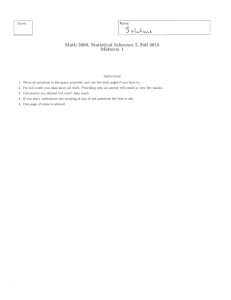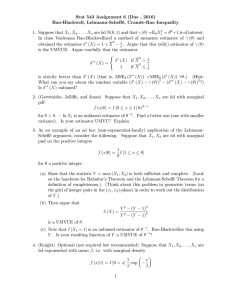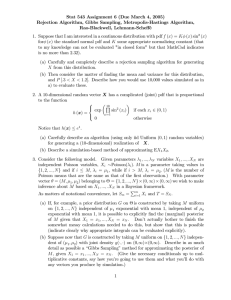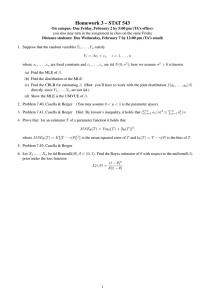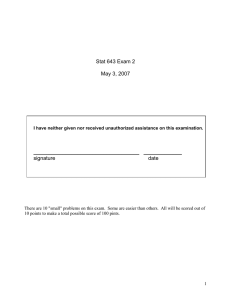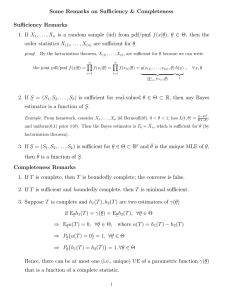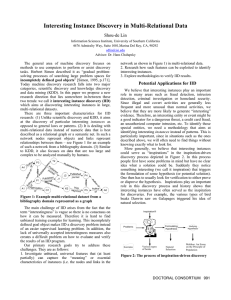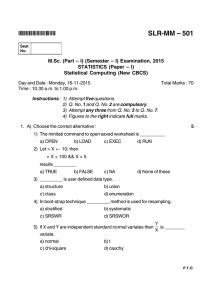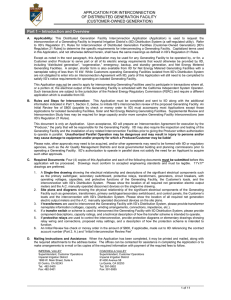STT 871-872 Preliminary Examination Wednesday, August 24, 2011
advertisement
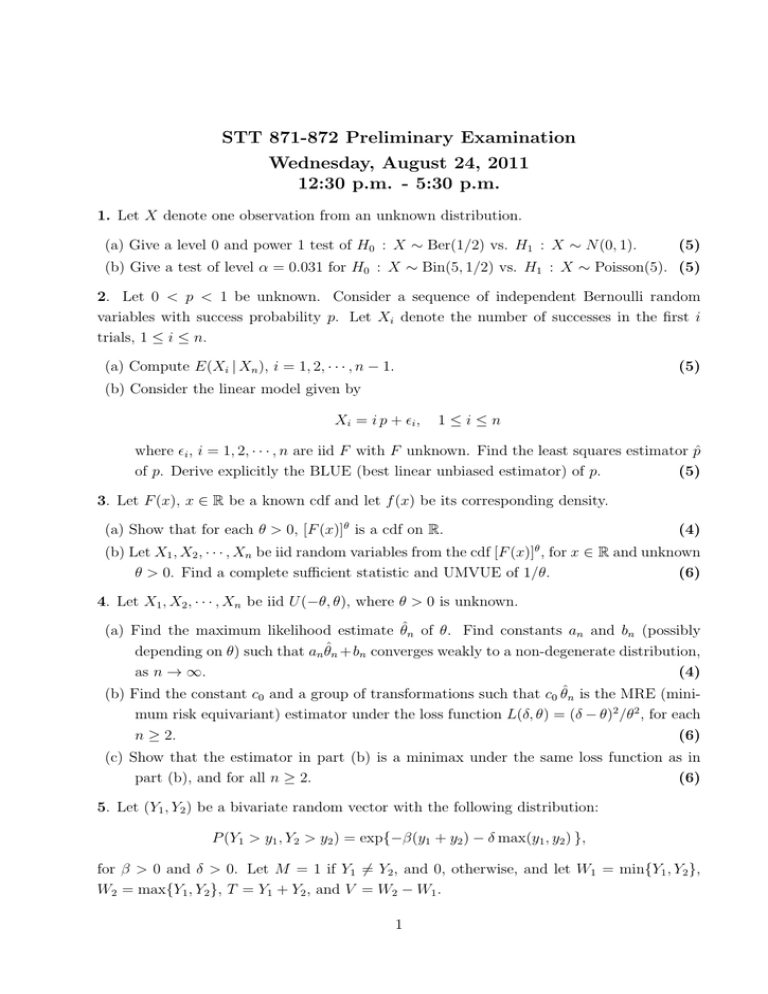
STT 871-872 Preliminary Examination
Wednesday, August 24, 2011
12:30 p.m. - 5:30 p.m.
1. Let X denote one observation from an unknown distribution.
(a) Give a level 0 and power 1 test of H0 : X ∼ Ber(1/2) vs. H1 : X ∼ N (0, 1).
(5)
(b) Give a test of level α = 0.031 for H0 : X ∼ Bin(5, 1/2) vs. H1 : X ∼ Poisson(5). (5)
2. Let 0 < p < 1 be unknown. Consider a sequence of independent Bernoulli random
variables with success probability p. Let Xi denote the number of successes in the first i
trials, 1 ≤ i ≤ n.
(a) Compute E(Xi | Xn ), i = 1, 2, · · · , n − 1.
(5)
(b) Consider the linear model given by
X i = i p + ϵi ,
1≤i≤n
where ϵi , i = 1, 2, · · · , n are iid F with F unknown. Find the least squares estimator p̂
of p. Derive explicitly the BLUE (best linear unbiased estimator) of p.
(5)
3. Let F (x), x ∈ R be a known cdf and let f (x) be its corresponding density.
(a) Show that for each θ > 0, [F (x)]θ is a cdf on R.
(4)
(b) Let X1 , X2 , · · · , Xn be iid random variables from the cdf [F (x)] , for x ∈ R and unknown
θ > 0. Find a complete sufficient statistic and UMVUE of 1/θ.
(6)
θ
4. Let X1 , X2 , · · · , Xn be iid U (−θ, θ), where θ > 0 is unknown.
(a) Find the maximum likelihood estimate θ̂n of θ. Find constants an and bn (possibly
depending on θ) such that an θ̂n +bn converges weakly to a non-degenerate distribution,
as n → ∞.
(4)
(b) Find the constant c0 and a group of transformations such that c0 θ̂n is the MRE (minimum risk equivariant) estimator under the loss function L(δ, θ) = (δ − θ)2 /θ2 , for each
n ≥ 2.
(6)
(c) Show that the estimator in part (b) is a minimax under the same loss function as in
part (b), and for all n ≥ 2.
(6)
5. Let (Y1 , Y2 ) be a bivariate random vector with the following distribution:
P (Y1 > y1 , Y2 > y2 ) = exp{−β(y1 + y2 ) − δ max(y1 , y2 ) },
for β > 0 and δ > 0. Let M = 1 if Y1 ̸= Y2 , and 0, otherwise, and let W1 = min{Y1 , Y2 },
W2 = max{Y1 , Y2 }, T = Y1 + Y2 , and V = W2 − W1 .
1
(a) Show that (M, W2 , T ) is a minimal sufficient statistic under a suitable dominating
measure.
(6)
(b) Show that W1 is independent of (M, V ) and find the distribution of W1 .
(6)
6. Let θ ∈ R and let F be a cdf such that F (0) = 1/2. Let X1 , X2 , · · · , Xn be iid from
F (· − θ) that is Pθ (Xi ≤ x) = F (x − θ), x ∈ R, for all i = 1, 2, · · · , n. Define the n order
statistics by X(1) ≤ X(2) ≤ · · · ≤ X(n) .
(a) Construct a sequence { kn } of positive integers 1 ≤ kn ≤ n satisfying the following two
properties:
(1)
Pθ (X(kn ) ≤ θ < X(n−kn +1) ) ≥ 1 − α,
for all θ ∈ R.
(2)
Pθ (X(kn ) ≤ θ < X(n−kn +1) ) → 1 − α,
as n → ∞.
(6)
(b) Now assume F has derivative f at 0 with f (0) > 0. Find the constant w such that
(
)
n1/2 X(n−kn +1) − X(kn ) → w,
in probability as n → ∞.
(6)
7. Let (X1 , X2 , X3 ) ∼ Multinomial(n, p1 , p2 , p3 ). The Hardy-Weinberg equilibrium states
that
H : p1 = θ 2 ,
p2 = 2 θ (1 − θ) and p3 = (1 − θ)2
for some 0 < θ < 1.
(a) Show that X2 + 2X1 has a Binomial distribution under H.
(6)
(b) Show that the level of UMP unbiased test for testing H versus K : not H, is determined
by the conditional distribution of X1 , given X2 + 2X1 . Find an expression for this
conditional distribution.
(6)
8. Consider the linear model
yij = µi + ϵij ,
where ϵij are iid N (0, σ 2 ), σ 2 > 0 and unknown, for j = 1, 2, · · · , n and i = 1, 2, · · · , p.
Consider the problem of testing the hypothesis H : µi = β0 + β1 xi , for some unknown real
∑
numbers β0 and β1 , where xi ’s are known constants with pi=1 xi = 0.
(a) Find the UMP invariant test at level α for testing H versus the alternative K : not H.
(6)
2
(b) Find the asymptotic expression of the power for the following sequence of alternatives
√
µi = θ + hi / n,
i = 1, 2, · · · , p,
as n → ∞, based on the constants hi that satisfy
∑p
i=1
hi =
∑p
i=1
xi hi = 0.
(6)
(c) Does the test in part (a) still achieve level α, as n → ∞, even if the distribution of ϵij ’s
are not normal but still have mean 0 and unknown variance σ 2 . Prove or disprove.(6)
3

